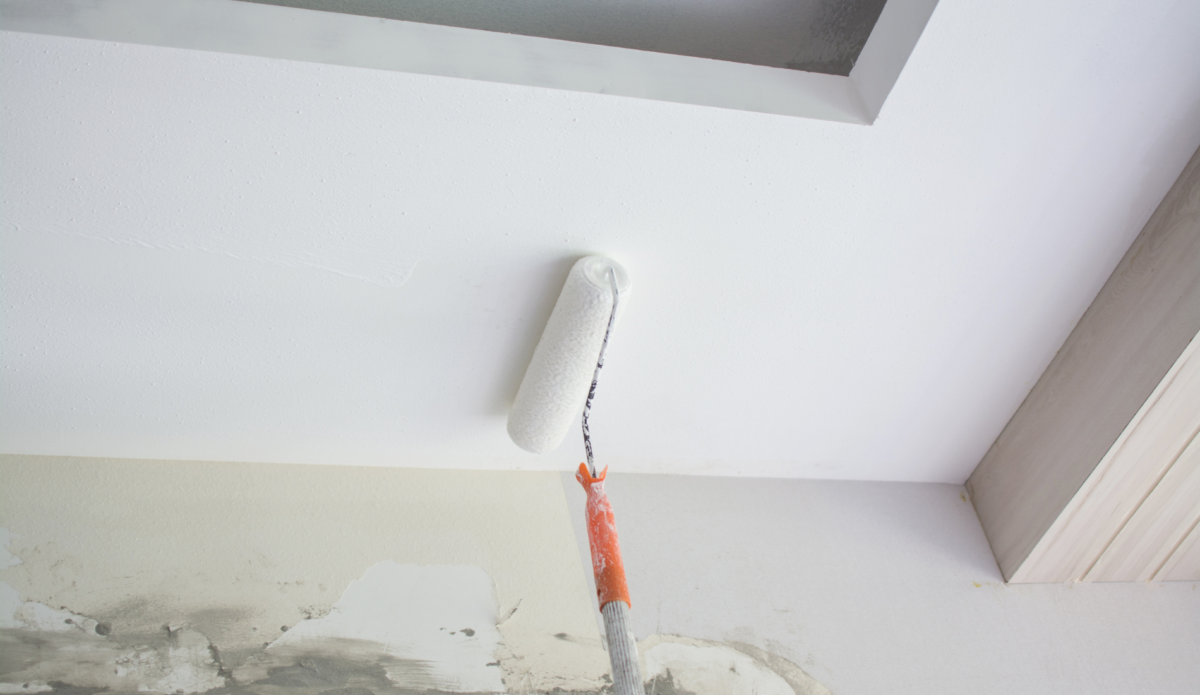What You Should Know About Ceiling Paint
The first step in repainting a room in your home is probably choosing on the color of the walls. But don’t forget to look up as well. Giving your ceilings a new coat of paint may brighten the space, hide flaws, and possibly even create a statement if you choose a bold color. Ceiling paint, which is sold separately from wall paint, is intended to make painting a ceiling simple and long-lasting.
What’s The Difference Between Wall Paint And Ceiling Paint?
Latex-based paint is most frequently used, when painting walls. This can facilitate smooth wall painting. But if you’ve ever tried to paint a wall with regular latex paint, you probably know how frequently the paint drips while you’re doing it. Now picture doing the same thing to the ceiling with paint. Since latex wall paint has a low viscosity, painting the ceiling with this kind of paint is a surefire way to get paint drips all over the floor.
Because ceiling paint is thicker than wall paint, it is less prone to spill when being applied. The conventional unit of measurement for viscosity is a Krebs Unit (KU), and the KU for the majority of ceiling paints is greater than the KU for the most of interior wall paints.
You can also get a sense of this at the paint store by holding a gallon of wall paint in one hand and a gallon of ceiling paint in the other. Since the gallon of ceiling paint contains more solids by weight than the gallon of wall paint, it should weigh more.
The greater thickness of ceiling paint not only makes application and cleanup easier but also improves its ability to conceal existing stains.
Types of Ceiling Paint
There are several choices in the area of ceiling paint. Take into account the purpose of the space you are painting in addition to the style of ceiling to choose the best sort of paint for the job.
- Flat Acrylic – This is the most popular type of ceiling paint and is ideal for low-humidity environments like bedrooms and living rooms. Flat paint doesn’t reflect much light, making it ideal for most ceilings.
- Satin Acrylic – In rooms with greater humidity levels, flat paint is more likely to discolor, crack, or chip. Because of this, satin sheen ceiling paint is preferable for ceilings in bathrooms, laundry rooms, and other more humid areas.
- Semi-Gloss Acrylic – The ceilings directly above a shower stall or any other area subject to a lot of constant humidity are best suited for semi-gloss ceiling paint, which is the sort of paint least likely to crack in humid areas.

Ceiling Paint Costs
A gallon of ceiling paint typically costs between $20 and $60. Up to 400 square feet, or one 20-by-20-foot room, may be covered by one gallon of paint. You will also need painter’s tape, a drop cloth, roller covers, paint brushes, and paint if you intend to DIY paint your ceilings. In the event that you don’t already have the required tools, it raises the price of ceiling paint.
If you hire a professional painter, the national average per square foot might cost anywhere from $1 to $2.50. Depending on the ceiling’s height, texture, paint color, and other factors, the price may increase.
Pros and Cons
Even if you go with the same general color, repainting your ceilings may seem like a lot of extra work for little return. A new coat of ceiling paint, though, may help the room look brighter, hide stains, and even add interest if you choose a bold color. Painting a ceiling is a reasonably cheap weekend job if you do it yourself.
Pros
- As a material, ceiling paint is more viscous than wall paint, which reduces the likelihood of drips and increases the probability that stains on the ceiling will be covered.
- Painting ceilings is a straightforward, inexpensive DIY project.
- There are no restrictions, even if white is the customary color for ceiling paint. Having a dark ceiling and light walls may create a striking, dramatic impact.
Cons
- It requires time and work to get ready to paint ceilings.
- The greatest use for leftover ceiling paint is on other ceilings.
- Doing the project yourself might be dangerous if the ceilings are high.
Other Things to Consider
Consider the type of ceiling when deciding how much paint to buy. Popcorn ceilings, in particular, will take more paint to cover the entire surface area uniformly. When purchasing additional painting materials, you should also consider the type of ceiling. Popcorn ceilings, for example, should be coated with a roller cover with a thick nap.
Ceiling paints are more viscous than wall paints, but not all ceiling paints are made equal. If you buy ceiling paint from a home improvement or specialty paint store, inquire about the differences in the ceiling paint products to discover which is best for your project.
Ceilings are most commonly painted in white or off-white tones. Painters frequently recommend tinting your ceiling paint with roughly one-third of the color used on the walls in the space if the walls are neutral. This unifies the room and might assist to emphasize the height of the walls.
When to Hire a Professional
It goes without saying that standing on a strong chair or ladder for a lengthy amount of time is required while painting ceilings. Depending on the height of the ceilings, this may need the use of a tall ladder, which is naturally unsafe for many individuals. Furthermore, painting ceilings in bigger buildings can be a time-consuming process.
A professional painter will have the necessary tools and expertise to accomplish the job with minimal disruption to your life.


